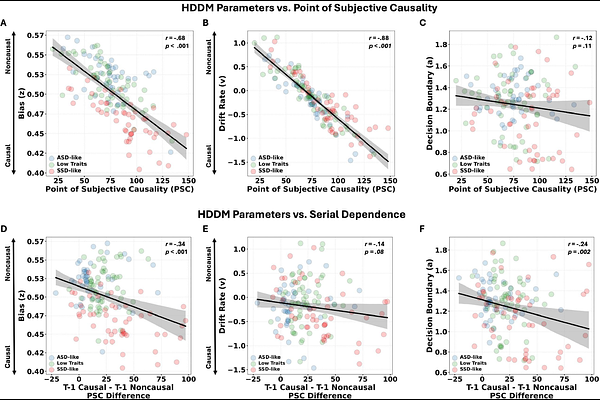Atypical weighting of sensory evidence and priors in causality perception along the autism-schizotypy continuum

Atypical weighting of sensory evidence and priors in causality perception along the autism-schizotypy continuum
Marsicano, G.; Melcher, D.
AbstractThe brain constructs a perceptual interpretation of the world by integrating sensory input with prior knowledge and expectations. Causality perception, a core example of this inferential process, enables observers to infer cause-effect relationships, such as whether a moving object causes another to move. Traditionally considered a low-level visual computation, causality perception is increasingly recognized as shaped by top-down dynamics, perceptual history, and individual predictive processing styles. Here, we examined how prior experience and cognitive-perceptual traits shape causal inference in 150 neurotypical individuals, using data-driven clustering to stratify participants along the autism-schizotypy (ASD-SSD) spectrum. Participants viewed dynamic collision events in which a moving circle contacted a stationary one, followed by variable temporal lags before the second object motion, and judged whether the interaction appeared causal or non-causal. Causality judgments were influenced by both physical timing (sensory-driven) and serial dependence on previous perceptual decisions (prior-driven). Hierarchical drift diffusion modeling (HDDM) revealed that SSD-like individuals showed a strong prior bias toward causality, greater serial dependence, and lower decision thresholds, reflecting a prior-dominated perceptual style. Conversely, ASD-like individuals exhibited reduced influence of perceptual history and higher decision thresholds, reflecting a conservative, data-driven style. Crucially, prior bias, serial dependence, and decision-making dynamics were strongly interrelated, revealing a hierarchical structure to perceptual inference across neurocognitive profiles. These findings demonstrate that causality perception emerges from predictive processes operating at multiple timescales and shaped by individual differences in neurocognitive style and perceptual flexibility.